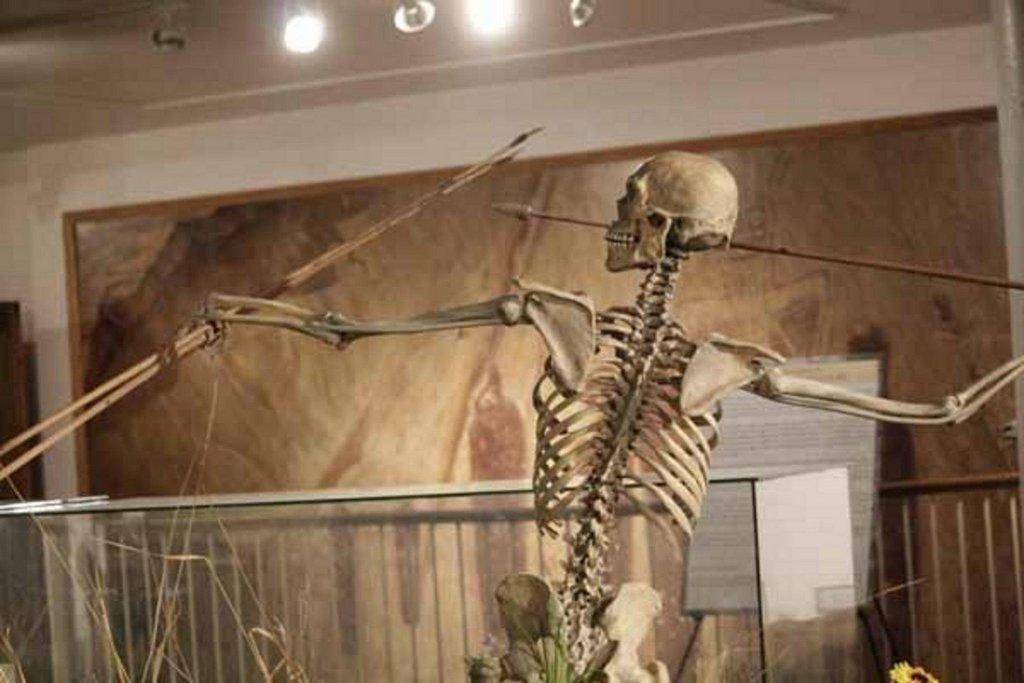Despite living in an area so rich in archaeological artifacts, what is truly known about the past inhabitants is not complete. With no written history other than pictures that are painted and carved into rocks, archaeologists must try to glean what information they can from one pot, dirt layer, and petroglyph at a time.
The Utah State University Eastern Prehistoric Museum in Price is as much of a research lab as it is a repository of relics from the past. Museum Director Ken Carpenter is working hard, making displays more dynamic so visitors can get a better feel of what life was like of those who came before us.
For many years there has been a diorama of a pit house in the facility. Carpenter has been steadily adding small details to the display such as smoke stains, food storage baskets, a fire pit with faux embers, and scattered debris that would be typically found in a lived-in structure.
Right now one can view the structure from the side. Eventually, Carpenter wants to make it a 360-degree display, with an associated walkway. He also wants to add a soundtrack of Navajo-speaking voices to help visitors feel they are intruding on a day in the life of a pit house family.
The mammoth skeleton is now more interactive. A skeleton of a spear-wielding prehistoric man is seen hiding in the weeds surrounding the mammoth. On August 9, actual pieces of ivory tusk and vertebrae from the mammoth recovered in Huntington Canyon will be on display.
Additionally on August 9, the museum will unveil a new exhibit called Ice Age Utah: Humans Arrive. The Joe Venus mural, and new information panels that surround it, is also worth checking out.
Carpenter wants to add more hands-on displays and exhibits, as well. Each display case will have pull out drawers with addition artifacts. Touching and feeling will be encouraged. Several of the displays will have braille labels for visually impaired individuals.
Every exhibit being designed is done with the new facility in mind. Carpenter wants to keep displays professional and fresh. He feels it important that information on display be current and cutting-edge.
Prehistoric Museum Archaeologist Dr. Timothy Riley is currently studying several projects in the back room, with a hope of learning more about the past. A recently recovered Ute “parching” basket will be examined for remnants of grains and other biological material so that information about the diets of those who used it may be better understood. The dirt from the two-handled pot from Nine Mile Canyon will be examined layer by layer.
The back room remains packed with pots and other materials. Some were confiscated by law enforcement from looters and pot hunters. Some are just brought in with no documentation. Those specimens are more difficult to study because the context surrounding the artifact is missing.
Local residents may think they have seen everything the museum has to offer, simply from just a single visit. Carpenter and staff invite everyone to come in again and see the facility and its new additions. Residents might be surprised by what they never knew was there.

